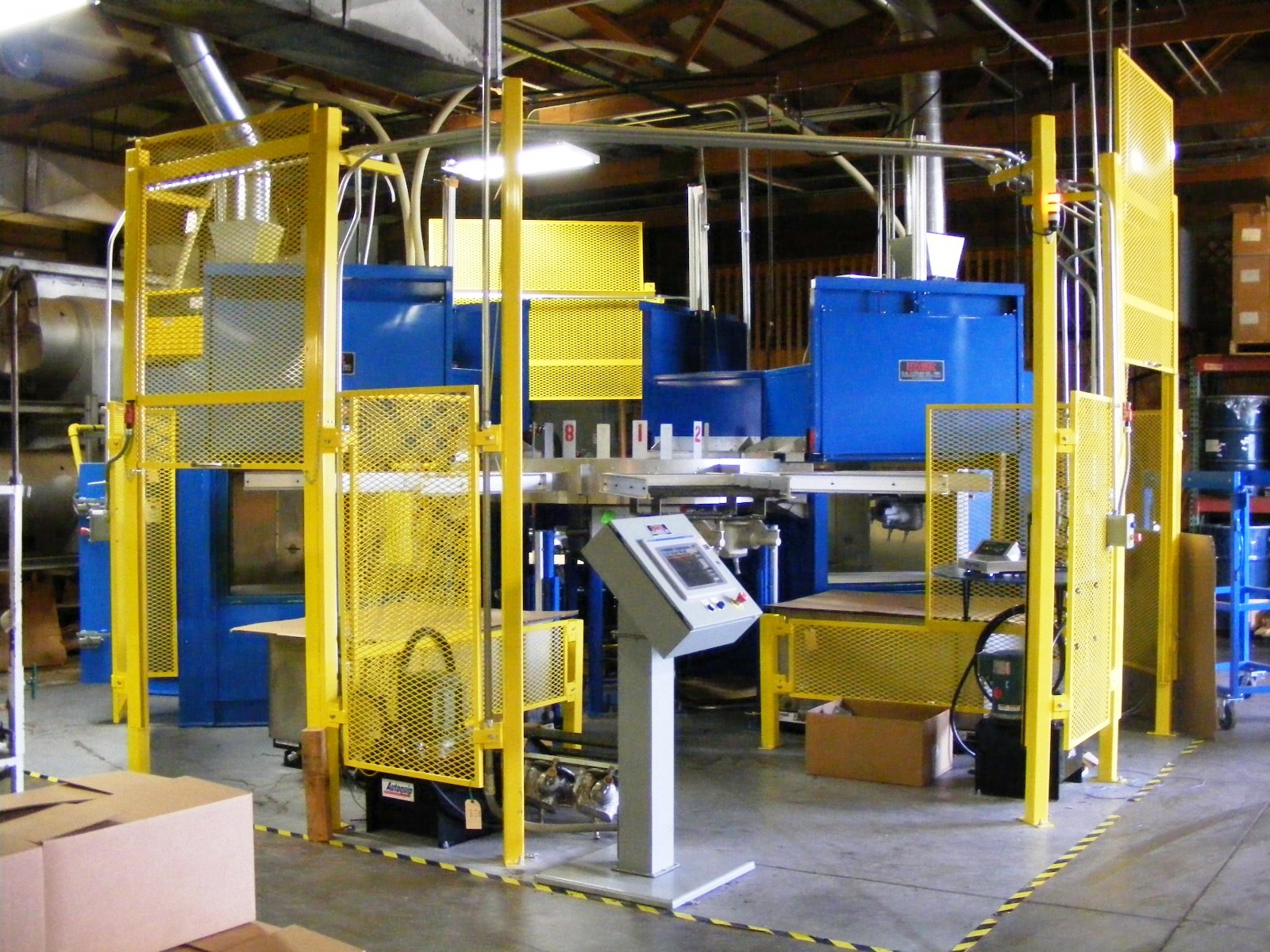Dip Molding & Dip Coating Systems
We Make the Right Dip Molding & Coating System for Your Needs
Dip coating is an effective method of applying protective or decorative coatings. C. A. Litzler Co., Inc. designs and builds MCT (Molding & Coating Technologies) dip molding and coating systems. Dip molding is an effective alternative to plastics processes for the molding of grips, handles, caps, plugs, and beverage ware, and the coating of hand tools, outdoor furniture and other metal products. With extensive dip molding and coating system experience, we offer more than machines for dip molding and coating, we provide solutions.
MCT systems are known for quality and innovation to meet your molding and coating needs. We provide comprehensive service to current and future manufacturers of dip molded and coated products. Our In-Line, Rotary, Advanced, and Dual-Path machines are the most advanced in the industry.
We can help resolve process issues, provide the right system for your production requirements, and teach your company the dip molding and coating process. Count on Litzler to be your single source for equipment, service, training, support, and education.
Dip Molding & Dip Coating Technologies
Level 1 In-Line Machines
The In-Line Machine processes a single frame of tooling through the dip molding process. As a moderate volume machine, it is ideal for custom parts, prototyping, and products requiring finishing.
In-Line Machine Benefits
- Low-Cost: Minimum capital investment, requiring only a single oven and transfer rack.
- Flexibility: Ability to use a wide range of materials such as foams and fills to produce an equally wide range of products in many sizes.
- Scale-Up: Variables on this machine are saleable to other MCT machines when production volume increases.
Level 2 Rotary Machines
Rotary Machines use six, eight, or ten arms to carry the frames of tooling, likes spokes on a wheel, radiating out from the center. As the frames transfer through the dip molding process, all of the arms index at the same time. The configuration of the Rotary Machine can include offline dip stations, which increase process options and provide more flexibility.
Rotary Machine Benefits:
- High Production Yield: This system is capable of processing up to 60 frames of tooling per hour.
- Relative Low Cost: The cost of the handling mechanisms is minimized.
- Low Maintenance: Simple mechanical systems for reliable operation.
Level 3 Advanced Machines
The Advanced Machine separates the preheat and cure into separate ovens. It also has two lateral transfers. Each oven has an entry and exit door, the tooling is carried through the system on precision conveyors. The ovens are placed side by side with the two transfers placed at each end to facilitate tooling movement through the various process steps. Frames cycle around the machine independently, providing immense flexibility.
Advanced Machine Benefits
- High Production Yield: Systems can be built to produce over 60 frames of tooling per hour.
- Flexibility: Ability to use a wide range of materials such as foams and fills to produce a wide variety of products at the same time. The system can be designed with up to six active dip tanks.
- Multiple Dip Capability: Allows different parts to be made with different colors and in multiple dips. Double and triple dip capabilities available.
Level 4 Dual-Path Advanced
To enhance the design for double dipped and foam parts, the Dual-Path Advanced Machine is available, offering more features: a second rear transfer and second dip station. The second rear transfer allows for two frames to be vinyl dipped simultaneously, eliminating the bottleneck at the vinyl dip station typically associated with the long dip times of double dipped and form parts.
Dual-Path Advanced Machine Benefits:
- High Production Yield: Allows double and triple dipped parts to be made without slowing production.
- Flexibility: Ability to use a wide range of materials such as foams and fills to produce a wide variety of products at the same time.
- Multiple Dip Stations: Allows different parts to be made with different colors and in multiple dips. The system can be designed with up to six active dip tanks.

